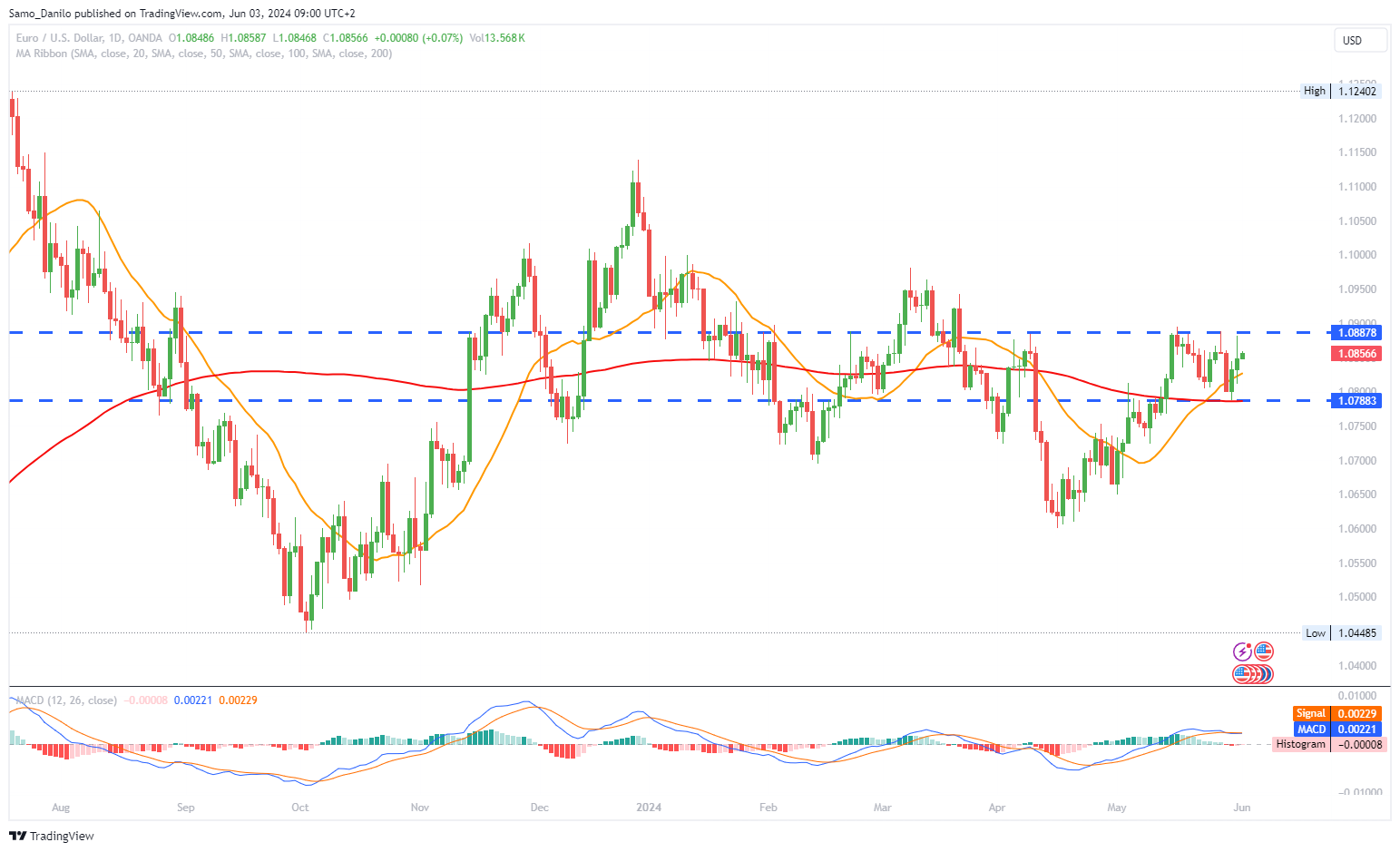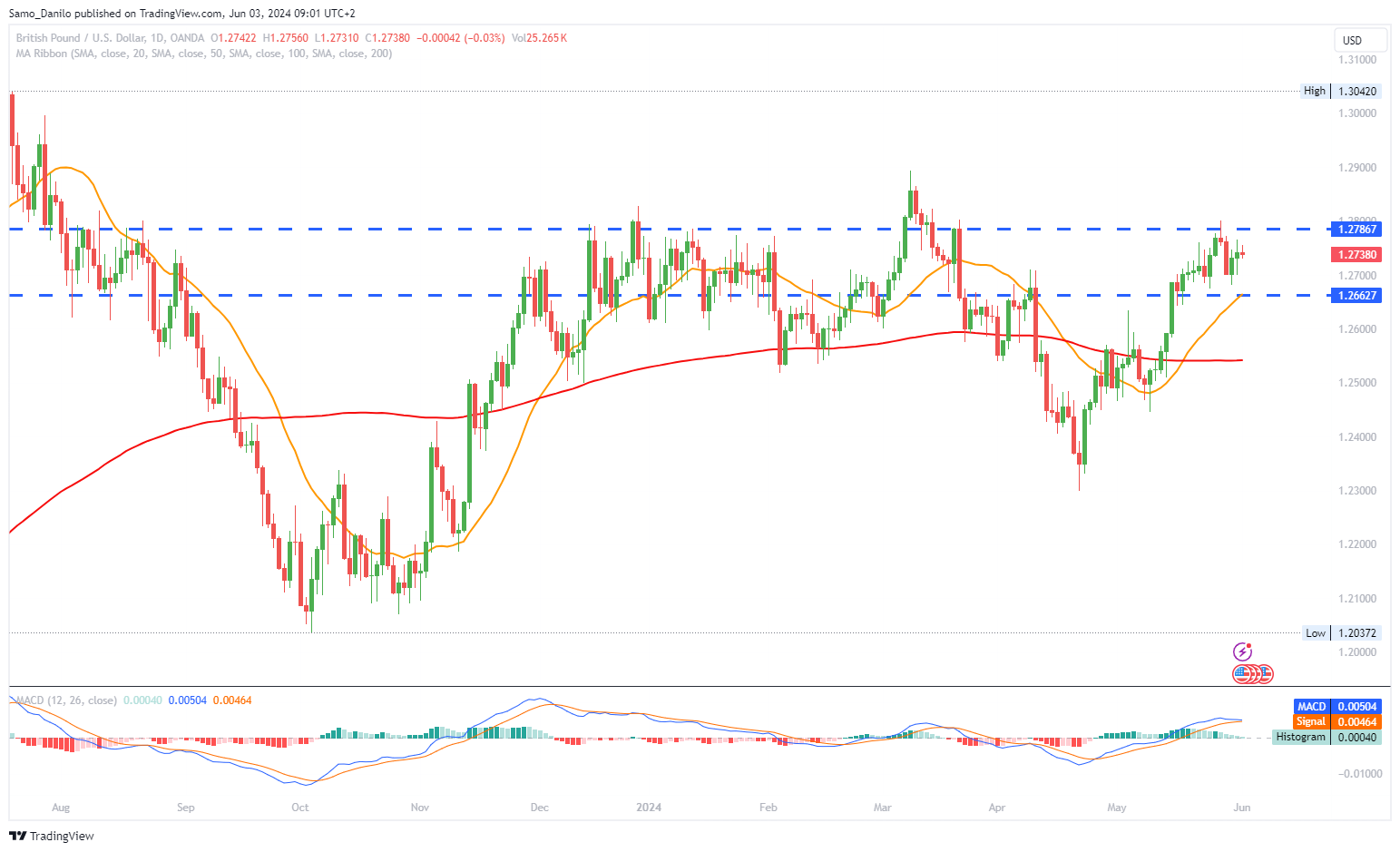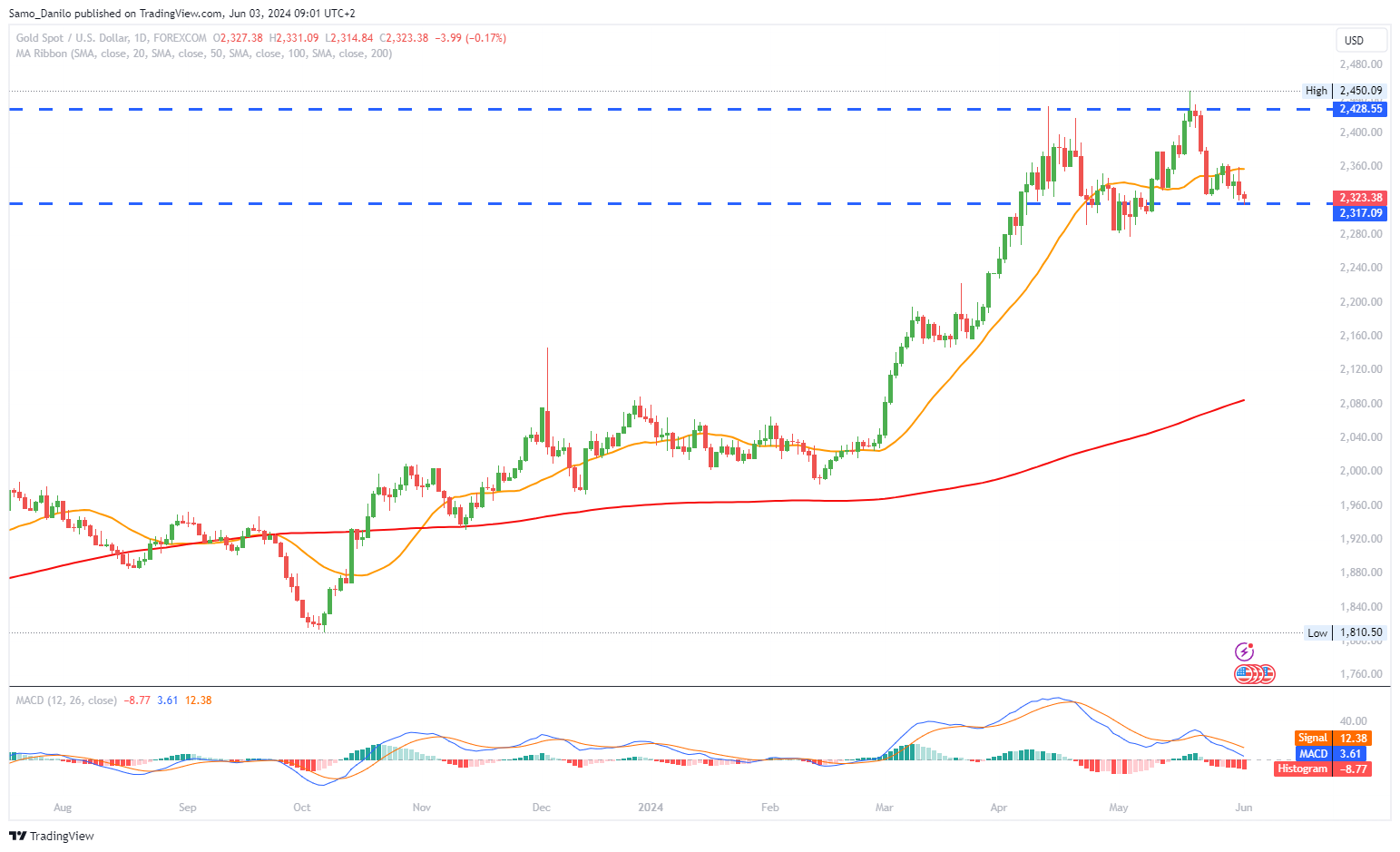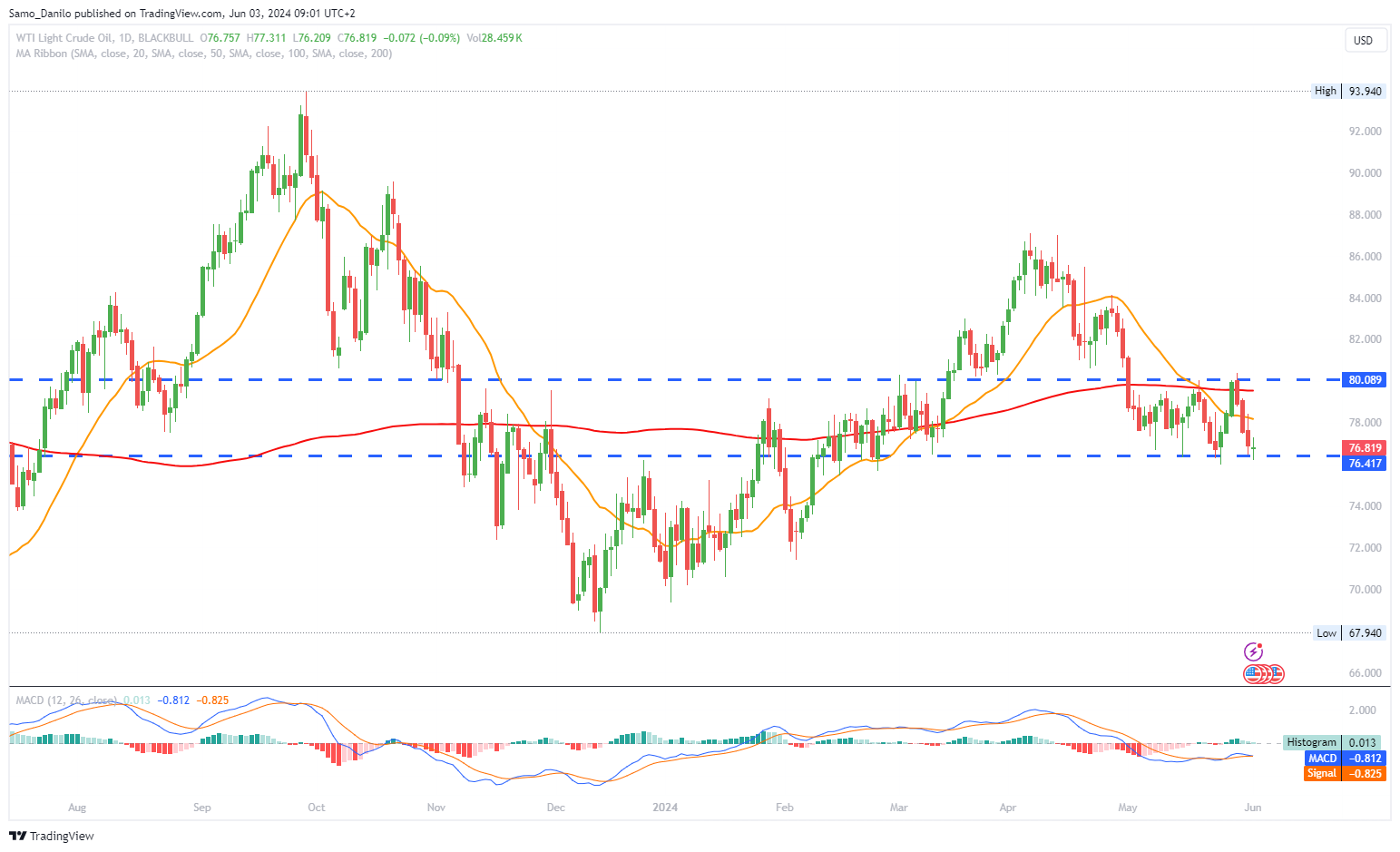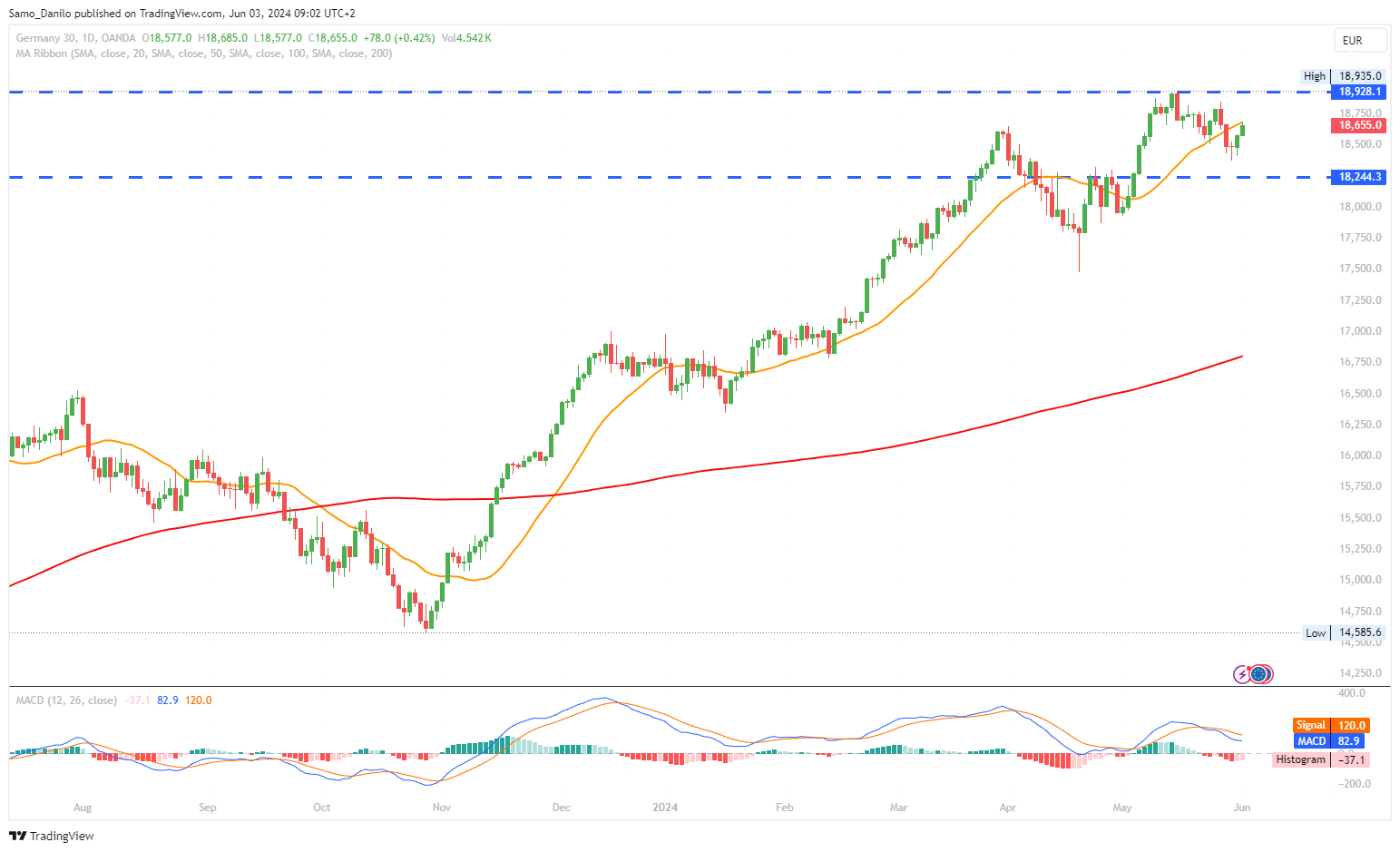EURUSD
- EUR/USD Trading Near 1.0850: EUR/USD is paring back gains, trading near 1.0850 in the European morning on Monday.
- Impact of Inflation Data: Cooler US PCE inflation data and better-than-expected Eurozone HICP inflation data are providing some support for the major pair.
- Eurozone Inflation and ECB Rate Cuts: Despite hotter-than-expected inflation in the Eurozone, it may not prevent the ECB from cutting interest rates this week, but it could signal a halt in July and slower rate reductions in the coming months.
- Market Expectations for ECB Rate Cuts: Financial markets have priced in nearly 25 basis point (bps) ECB rate cuts in June and 57 bps cuts in 2024, according to Reuters.
- US ISM Manufacturing PMI Focus: The US ISM Manufacturing PMI for May will take center stage on Monday ahead of the European Central Bank interest rate decision on Wednesday.
Closing statement: EUR/USD is trading near 1.0850 in the European morning, influenced by cooler US PCE inflation data and better-than-expected Eurozone HICP inflation data. Despite higher-than-expected Eurozone inflation, markets anticipate the ECB will proceed with rate cuts this week, potentially pausing in July and slowing further reductions. Financial markets have priced in significant ECB rate cuts for June and 2024. Investors are also closely watching the US ISM Manufacturing PMI for May, which will be a key focus ahead of the ECB's interest rate decision on Wednesday.
GBPUSD
- GBP/USD Trading Range: GBP/USD starts the week on a subdued note, oscillating in a narrow band around mid-1.2700s.
- US Inflation Data: The US Commerce Department's Bureau of Economic Analysis reported that US inflation, as measured by the Personal Consumption Expenditures (PCE) Price Index, rose 0.3% on a monthly basis in April, as expected.
- Annual Core PCE Inflation: The core PCE inflation data, the Federal Reserve’s preferred measure, grew steadily by 2.8% annually.
- Fed Policymakers' Stance: Fed policymakers have stated they want to see inflation declining for several months before considering a move towards policy normalization.
- UK Economic Data and Elections: With the absence of top-tier UK economic data, investors are looking for developments in the upcoming elections for market direction.
| SMA (20) | Rising |
|
|
| RSI (14) | Slightly Rising |
| |
| MACD (12, 26, 9) | Rising |
|
|
Closing statement: GBP/USD kicks off the new week trading in a narrow band around mid-1.2700s. US inflation data showed a 0.3% monthly rise in April, aligning with expectations, while annual core PCE inflation grew steadily at 2.8%. Fed policymakers are keen to see sustained inflation declines before considering policy changes. In the absence of significant UK economic data, investors are focusing on upcoming election developments to gauge future market movements.
GOLD
- Gold Price Movement: Gold price starts the week on a cautious note, trading near two-week lows around $2,315.
- Impact of US Core PCE Data: Gold failed to find relief from a softer-than-expected US monthly Core Personal Consumption Expenditure (PCE) Price Index reported on Friday.
- Middle East Geopolitical Developments: Markets are digesting recent developments in the Middle East after US President Joe Biden outlined a three-stage ceasefire plan aimed at de-escalating the conflict.
- China's Manufacturing PMI: Positive sentiment was bolstered by China's S&P Global Caixin Manufacturing PMI data, which improved to 51.7 in May from 51.4 in April, surpassing the estimated 51.5.
- Focus on Upcoming US Employment Data: Market attention shifts to this week’s US employment data, which is expected to provide fresh insights into the timing of the first interest rate cut by the US Federal Reserve (Fed).
| SMA (20) | Rising |
|
|
| RSI (14) | Neutral | ||
| MACD (12, 26, 9) | Falling |
|
|
Closing statement: Gold prices begin the week cautiously, trading near two-week lows around $2,315. Despite a softer-than-expected US Core PCE Price Index, gold found no relief. Market participants are also digesting the Middle East geopolitical developments following President Biden's ceasefire plan. Positive news came from China's S&P Global Caixin Manufacturing PMI, which improved to 51.7, adding to economic optimism. This week’s focus will be on US employment data, which could offer new hints regarding the Fed’s interest rate cut timeline.
CRUDE OIL
- WTI Oil Price Movement: West Texas Intermediate (WTI) oil prices are struggling to break a three-day losing streak, trading around $77.00 per barrel during the Asian session on Monday.
- OPEC+ Output Cuts Extension: Reuters reported that OPEC+ has agreed to extend its oil output cuts into 2025 to support prices amid sluggish demand growth. The decision includes prolonging cuts of 3.66 million barrels per day (bpd) until the end of 2025 and extending the cuts of 2.2 million bpd by three months until September 2024.
- US PCE Data Impact: On Friday, US Personal Consumption Expenditure (PCE) data indicated that price pressures eased in April. Despite this, the Federal Reserve (Fed) did not move towards a rate cut.
- Market Sentiment: Despite the easing price pressures indicated by the US PCE data, the market remains cautious due to the Fed's stance on interest rates.
- Geopolitical Developments: Investors are closely monitoring geopolitical tensions, as any escalation could potentially drive up crude oil prices.
| SMA (20) | Falling |
|
|
| RSI (14) | Slightly Falling |
| |
| MACD (12, 26, 9) | Slightly Rising |
|
Closing statement: WTI oil prices remain under pressure, trading around $77.00 per barrel as they attempt to break a three-day losing streak. OPEC+ has agreed to extend its substantial oil output cuts into 2025 to bolster prices amidst sluggish demand growth. The US PCE data for April showed eased price pressures but did not prompt a Fed rate cut, maintaining market caution. Investors are also closely watching geopolitical developments, with any escalation likely to impact crude oil prices significantly.
DAX
- China's PMI Data: On Friday, China’s NBS Manufacturing PMI fell from 50.4 to 49.5, indicating a contraction in the manufacturing sector, and the Non-Manufacturing PMI also missed forecasts, reflecting weaker economic activity midway through Q2 2024.
- German Retail Sales: Early in the European session on Friday, German retail sales showed a softer inflation outlook, with retail sales declining by 1.2% in April following a 2.6% surge in March.
- Eurozone Inflation: Eurozone inflation numbers for May impacted buyer demand for DAX-listed stocks, with the annual inflation rate increasing from 2.4% to 2.6% and core inflation rising from 2.7% to 2.9%.
- German and Eurozone Manufacturing PMIs: On Monday, finalized Manufacturing PMI numbers for Germany and the Eurozone will be critical. Preliminary data showed Germany’s Manufacturing PMI improving from 42.5 to 45.4 in May, while the Eurozone’s Manufacturing PMI rose from 45.7 to 47.4.
- US ISM Manufacturing PMI: Later on Monday, the ISM Manufacturing PMI is expected to garner investor attention, with economists forecasting an increase from 49.2 to 49.8 in May.
| SMA (20) | Rising |
|
|
| RSI (14) | Slightly Rising |
| |
| MACD (12, 26, 9) | Slightly Falling |
|
Closing statement: DAX-listed stocks are influenced by various factors including China's weaker-than-expected PMI data, signalling a contraction in the manufacturing sector. German retail sales indicate a softer inflation outlook, but higher-than-expected Eurozone inflation numbers for May weigh on investor sentiment. Key upcoming data includes the finalized Manufacturing PMI numbers for Germany and the Eurozone, and the US ISM Manufacturing PMI, which are expected to provide further direction for investors.
